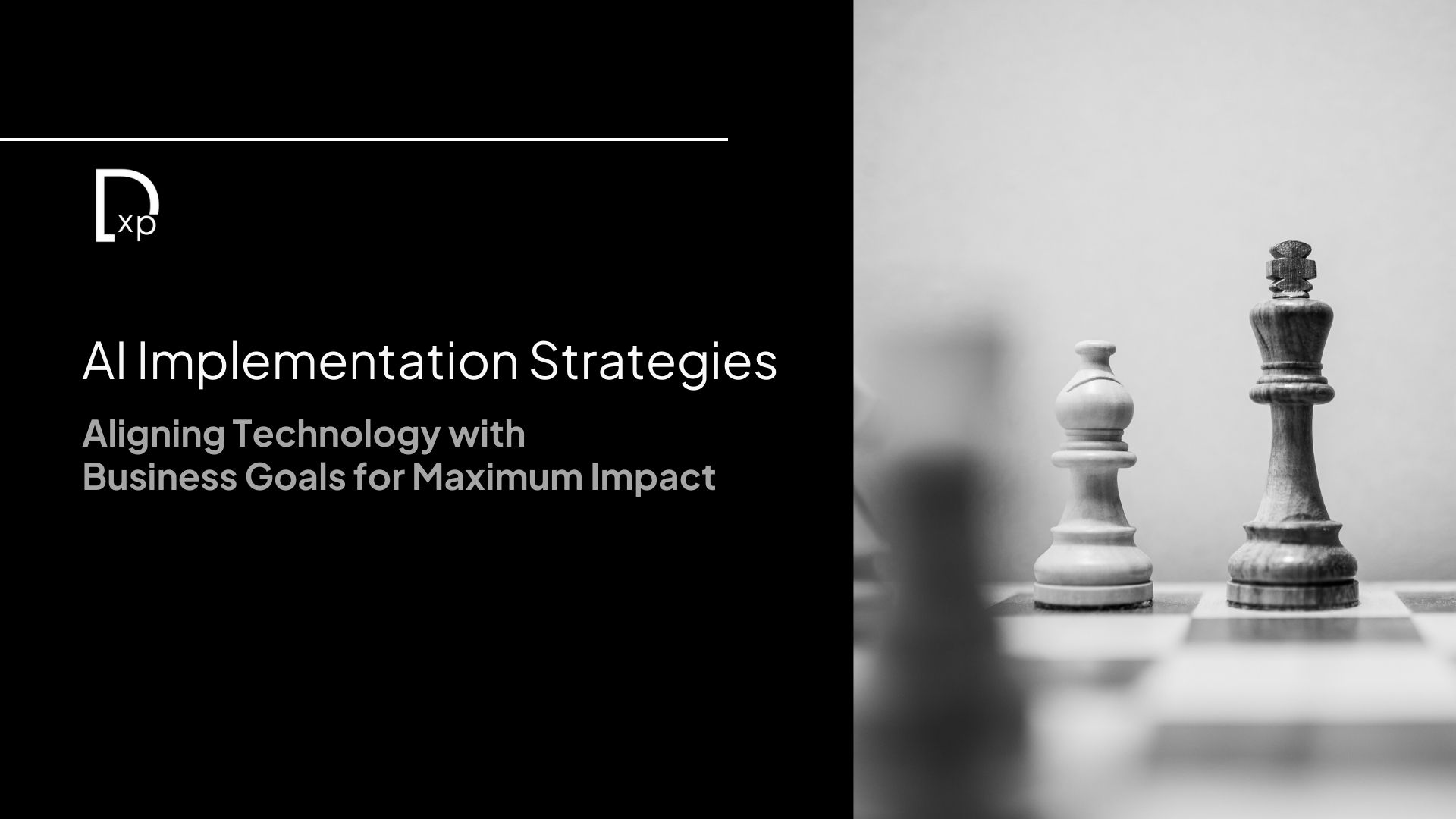AI Implementation Strategies: Aligning Technology with Business Goals for Maximum Impact

Introduction: The Necessity of Strategic Alignment
In the era of digital transformation, the successful implementation of artificial intelligence (AI) is essential for organizations seeking to enhance their operational efficiency and drive innovation. However, merely adopting AI technologies is not enough; aligning these initiatives with broader business goals is crucial for maximizing their impact. This guide outlines effective AI implementation strategies that ensure technology serves as a powerful tool in achieving organizational objectives.
Step 1: Understand Your Business Goals
The first step in aligning AI initiatives with business goals is to have a thorough understanding of your organization’s strategic objectives. Whether the focus is on improving customer experience, increasing operational efficiency, or driving revenue growth, every AI initiative should directly contribute to these goals. Engage with key stakeholders across departments to gain insights into their priorities and challenges. This collaborative approach will help create a unified vision for AI implementation that resonates throughout the organization.
Step 2: Identify Relevant Use Cases
Once you have a clear understanding of your business goals, the next step is to identify specific use cases where AI can make a tangible impact. Conduct a comprehensive assessment of various departments and processes to uncover areas ripe for automation, optimization, or predictive analytics. Prioritize these use cases based on their potential return on investment (ROI) and alignment with your strategic objectives. By focusing on high-impact areas, organizations can maximize the effectiveness of their AI initiatives.
Step 3: Develop a Comprehensive AI Strategy
With defined business goals and identified use cases, it’s time to develop a comprehensive strategy for AI implementation. This roadmap should outline key milestones, resource allocation, timelines, and risk management plans. A well-structured strategy provides clarity and direction as you navigate the complexities of integrating AI into your operations. It should also include provisions for ongoing evaluation and adaptation to ensure that your initiatives remain aligned with evolving business needs.
Step 4: Assemble a Cross-Functional Team
Successful AI implementation requires collaboration across various departments, including IT, marketing, operations, and finance. Assemble a cross-functional team that can work together effectively throughout the implementation process. This team should include individuals with diverse skill sets and perspectives, ensuring that all aspects of the organization are represented in decision-making. Fostering a culture of teamwork will enhance communication and ownership of AI projects, leading to better outcomes.
Step 5: Invest in Talent Development
A significant challenge in AI implementation is the talent gap in data science and machine learning expertise. To address this issue, organizations must prioritize talent development through training programs and upskilling initiatives for existing employees. Investing in your workforce not only helps bridge the skills gap but also fosters a culture of innovation where employees feel empowered to leverage AI technologies effectively. Additionally, consider hiring new talent with specialized knowledge to complement your existing team.
Step 6: Monitor Progress and Measure Success
To ensure that AI initiatives are delivering value, it’s essential to establish key performance indicators (KPIs) that align with your defined business goals. Regularly assess these metrics to gauge success and identify areas for improvement. This data-driven approach allows organizations to make informed decisions about their AI strategies and adjust them as necessary to optimize performance.
Step 7: Foster a Culture of Innovation
Creating an environment that encourages experimentation and innovation is vital for successful AI implementation. Employees may feel apprehensive about adopting new technologies or fear job displacement due to automation. To alleviate these concerns, leadership should actively communicate the benefits of AI and involve employees in the implementation process. By fostering an open dialogue about fears and expectations, organizations can create a culture that embraces change and encourages collaboration.
Step 8: Scale Up Gradually
Once pilot projects have been validated and refined based on feedback, it’s time to scale up your AI initiatives across the organization. Develop a plan for gradual expansion that considers resource availability and infrastructure requirements. Scaling should be done thoughtfully to ensure that new implementations are integrated seamlessly into existing processes without causing disruptions.
Conclusion: Achieving Maximum Impact Through Strategic Alignment
In conclusion, aligning AI implementation strategies with business goals is essential for maximizing impact and driving sustainable growth. By understanding business objectives, identifying relevant use cases, developing comprehensive strategies, assembling cross-functional teams, investing in talent development, monitoring progress, fostering innovation, and scaling up gradually, organizations can unlock the full potential of artificial intelligence.
As businesses continue to navigate the complexities of digital transformation, embracing these strategies will position them as leaders in an increasingly competitive landscape. The successful integration of AI into organizational operations not only enhances efficiency but also drives innovation—ultimately transforming vision into reality.




